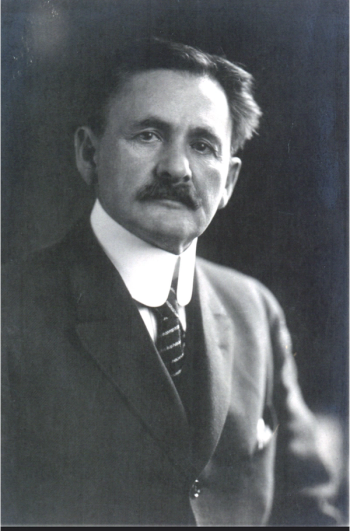
- IR Spectroscopy for Today's Spectroscopists
- Volume 36
- Issue S8
Resonant Surface-Enhanced Infrared Spectroscopy (Resonant SEIRA) Using Metal Nanoantennas
Resonant SEIRA overcomes the limitations of traditional Fourier transform infrared (FT-IR) spectroscopy for minute sample sizes of relatively low absorptivity. Frank Neubrech of Heidelberg University is exploring resonant SEIRA in applications such as monitoring dynamic processes and hyperspectral infrared chemical imaging.
Resonant surface-enhanced infrared spectroscopy (resonant SEIRA) overcomes the limitation of traditional Fourier transform IR (FT-IR) spectroscopy for minute sample sizes of low infrared absorption cross-sections (relatively low absorptivity). This technique provides orders of magnitude enhancement in the detection of infrared vibrations of molecules located in the proximity of resonantly excited (plasmon related) electromagnetic fields. Resonant SEIRA has been demonstrated in applications such as the monitoring of dynamic processes, the detection of proteins, and in hyperspectral infrared chemical imaging. We were recently able to interview Frank Neubrech, PhD, postdoctoral research associate at Heidelberg University, and Professor Harald Giessen at the 4th Physics Institute at Stuttgart University, Germany regarding this research.
You have developed a new SEIRA technique using resonant metal nanoantennas (resonant SEIRA) (1). How did you come to discover this phenomenon? What is unique about the capabilities of your approach as compared to traditional FT-IR and earlier work in SEIRA?
The original discovery was by Frank Neubrech, published in Physical Review Letters in 2008 (2). Resonant plasmonic nanoantennas and coupling to electronic transitions of emitters such as dye molecules or quantum dots was a very hot topic at the time.
Increasing the nanoantennas’ size to shift their localized surface plasmon polariton resonance from the visible into the near- and mid-IR was a sensible research direction. Given that molecular vibrations are situated in the mid-IR, it was clear that in that case one might also couple resonant energy to molecular vibrations and phonons instead of electronic transitions.
Traditional FT-IR has limited sensitivity when it comes to single-molecule layers. Only in geometries such as IR reflection absorption spectroscopy (IRRAS) is it possible when utilizing grazing incidence and large areas to get enough signal-to detect IR vibrations of single-molecular layers. Traditional SEIRA utilized mostly just the fact that at a surface (or an interface) such as metal-to-air or dielectric-to-air, electric fields of incident light could be enhanced. This held particularly true for rough surfaces where hot-spots of light potentially formed, however with the plasmonic resonance strongly detuned from the molecular vibration.
In contrast, resonant SEIRA took the unknown out of this technique by tailoring the localized surface plasmon polariton resonance of a plasmonic nanoantenna (or as many call it, the plasmonic antenna resonance) such that it was in resonance with molecular vibrations or phonons in solids. The field enhancement was thus larger, more quantifiable, and more reproducible.
How does resonant SEIRA overcome the limitation of low IR absorption cross-sections inherent to common FT-IR spectroscopic measurements?
In resonant SEIRA, the incoming light is absorbed and scattered by a plasmonic nanoantenna and excites a localized surface plasmon polariton resonance in it. The electric field distribution around the nanoantenna is enhanced up to 1-2 orders of magnitude, and this light then interacts with the molecular vibrations or phonons of the molecules in solids that are situated right in these tailored hot spots of light.
Would you briefly explain to our readers the principle of resonant coupling between plasmonic and vibrational excitations?
When two harmonic oscillators of the same frequency are brought in close vicinity, they can couple to each other. If the oscillators are of similar oscillator strength and line width, then typically normal mode coupling and splitting of the resonances occurs in case of strong coupling. If the oscillators are dissimilar in oscillator strength and line width, then a Fano-type situation arises, which is indicated by a strongly asymmetric (dispersive) narrow line shape that sits within or on top of the Lorentzian line shape of the broader oscillator.
In SEIRA, the plasmonic oscillator typically takes the role of the broader, stronger oscillator, whereas the molecular vibration or phonon takes the role of the weaker and narrower oscillator. Microscopically, it is the polarizations of the displaced dipoles (in one case the collective motion of the electrons in the surface plasmon of the nanoantenna and in the other case the dipolar molecular polarizability upon its vibrational motion) that couple with each other due to Coulomb interaction.
Would you explain the issues associated with maximizing the resonant SEIRA signal enhancement and how this affects the choice of nanostructures geometry, arrangement, and materials? In other words, how do these choices affect the intensity of localized surface plasmon polariton resonances (LSPRs)?
It is necessary to increase the local electric field at the position of the molecules or solids as much as possible. This can be done by choosing an appropriate geometry, such as a rectangular nanoantenna or a gap antenna or sharp-tipped geometries such as bow-tie antennas. We found that also low-index substrates such as calcium fluoride (CaF2) help as they expel the electric field out of the substrate and thus towards the molecules.
Furthermore, single crystalline metals such as gold for the nanoantennas seem to be beneficial as well. The resonance of the antenna should be as large and as narrow as possible. Lower quality factor plasmons in materials such as titanium nitride (TiN) or aluminum (Al) are not beneficial for the maximum resonant SEIRA signal. High Q resonances in graphene nanoribbons or in silicon nanoresonators (as used by Hatice Altug’s group in [3] and ([4]) are beneficial.
What improvements would resonant SEIRA have for hyperspectral infrared chemical imaging?
Again, due to the large local field enhancements, smallest amounts of chemical traces can be locally detected and hence imaged with appropriate detectors. We have demonstrated this by using patterns of Buckminsterfullerene (C60) and pentacene on a nanoantenna array.
What are the unique aspects of sample preparation for resonant SEIRA? Are there sample size limitations that limit the applicability of this technique? Are you surprised at the level of signal enhancement for this technique?
The molecules or solids should be brought to the positions of maximum field enhancement of the nanoantenna array. This can be done by tailored chemical functionalization, evaporation techniques, or simple dropcasting.
There are in principle no sample size limitations if one can prepare large nanoantenna arrays by suitable methods, such as electron beam lithography, ion beam lithography, photolithography, interference lithography, direct laser writing, or bottom-up self-assembly methods such as colloidal hole lithography or colloidal etching lithography.
We were glad that the signal enhancement was up to 1 million compared to conventional FTIR measurements, but in hindsight this corresponded to the enhancement values given the local field enhancements and the local field distributions.
What special discoveries have you made using this method and which of these has surprised you the most?
Apart from identifying many chemical species, we were able to detect in vitro protein folding and are working on doing so at the single nanoantenna level.
What do you believe is the potential for this method to achieve single-molecule sensitivity? Would you tell us a little about the potential for real-time monitoring of lipid membranes?
The vibration-specific detection of single molecules is our ultimate goal. If the antenna resonance is optimized and the light source is brilliant enough and spectrally stable and has small enough noise, and if good coupling and photostability are present, vibration-specific single molecule detection should be feasible. Also, real-time monitoring of lipid membranes was already demonstrated (5).
What do you anticipate is your next area of research in this field, and what would be your next steps in advancing this work? And do you anticipate your team doing any work in the THz region in the near future?
We hope to take this method also into detection of adsorbed gaseous molecules. We have been able to go into the THz region as well, both in the double- and single-digit THz region (6). Whether the method can be taken into the 1 THz or even to the hundreds of GHz region to couple to really low-energy excitations remains to be seen.
References
(1) F. Neubrech, C. Huck, K. Weber, A. Pucci, and H. Giessen, Chemical Reviews, 117(7), 5110–5145 (2017). doi: 10.1021/acs.chemrev.6b00743.
(2) F. Neubrech, A. Pucci, T.W. Cornelius, S. Karim, A. García-Etxarri, and J. Aizpurua, Physical Review Letters, 101(15), 157403 (2008). doi: 10.1103/PhysRevLett.101.157403.
(3) A. Tittl, A. Leitis, M. Liu, F. Yesilkoy, D.Y. Choi, D.N. Neshev, Y.S. Kivshar, and H. Altug, Imaging-based molecular barcoding with pixelated dielectric metasurfaces. Science, 360(6393), 1105–1109 (2018). doi: 10.1126/science.aas9768.
(4) D. Rodrigo et al., Mid-infrared plasmonic biosensing with graphene, Science 349, 165-168 (2015). doi: 10.1126/science.aab2051.
(5) O. Limaj, D. Etezadi, N.J. Wittenberg, D. Rodrigo, D. Yoo, S.H. Oh, and H. Altug, Nano Letters,16(2), 1502–1508 (2016). doi: 10.1021/acs.nanolett.5b05316.
(6) K. Weber, M.L. Nesterov, T. Weiss, M. Scherer, M. Hentschel, J. Vogt, and F. Neubrech, ACS Photonics, 4(1), 45–51 (2016). doi: 10.1021/acsphotonics.6b00534.
Frank Neubrech is a postdoctoral research associate working with Professor Harald Giessen at the 4th Physics Institute at Stuttgart University, Germany, and since 2016 with Professor Na Liu at the Kirchhoff Institute for Physics at the University Heidelberg, Germany. He received his Ph.D. in Physics from Heidelberg University in 2008 under the supervision of Professor Annemarie Pucci. In 2012, he joined Professor Harald Giessen’s group after a postdoctoral position at Heidelberg University. His main research interests include surface-enhanced infrared spectroscopy, infrared spectroscopy, and plasmonics.
Jerome Workman, Jr. is the Senior Technical Editor for LCGC and Spectroscopy. Direct correspondence to:
Articles in this issue
Newsletter
Get essential updates on the latest spectroscopy technologies, regulatory standards, and best practices—subscribe today to Spectroscopy.





